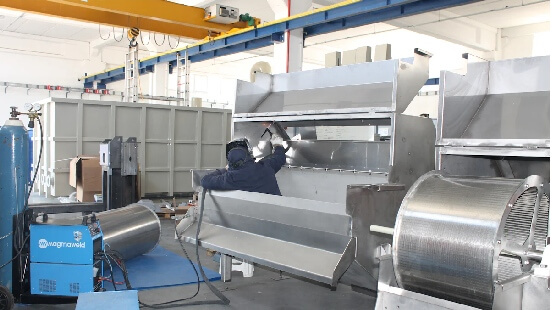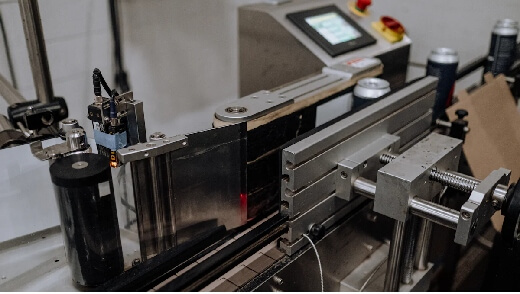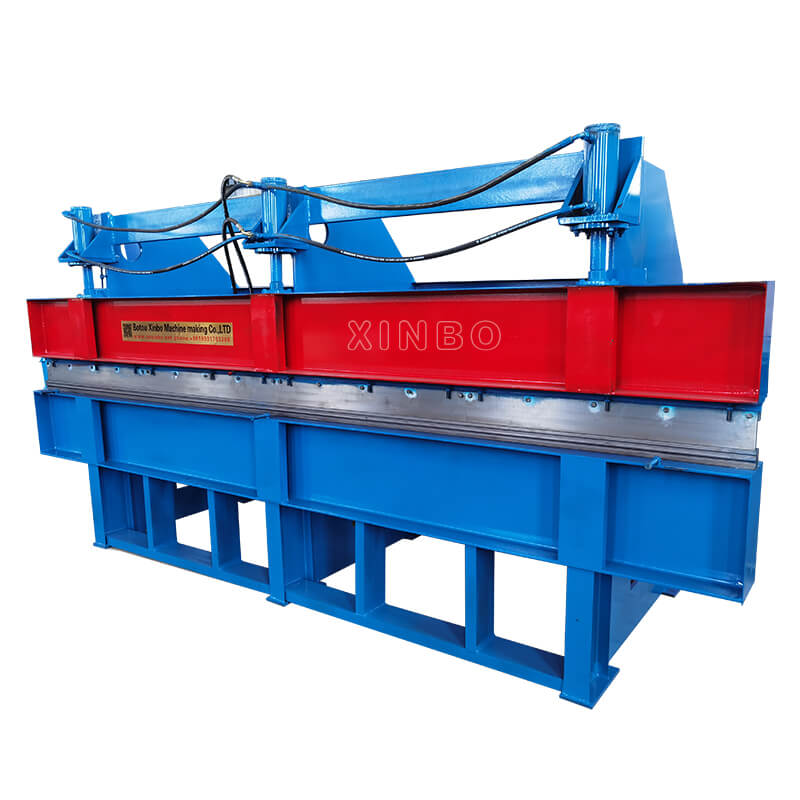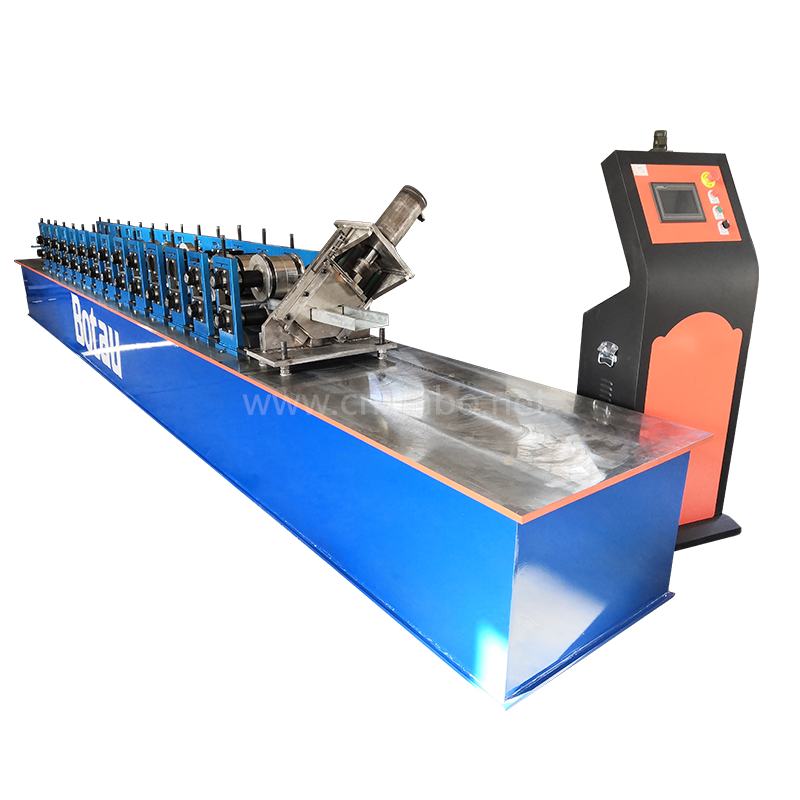Unveiling the Secrets: Bending Machine Structure Explained
Understanding the bending machine structure is crucial for mastering the art of bending. This blog provides a comprehensive overview of the components that make up these powerful machines. By delving into the intricate details, readers will gain a profound insight into the inner workings of a bending machine. The main focus lies in unraveling the mysteries behind each element, shedding light on their significance in the grand scheme of machine operations.
Overview of Bending Machines
Structure Description
Bending machines are intricate pieces of equipment designed to perform precise bending operations on various materials. The bending machine structure is a carefully engineered system that consists of essential components working harmoniously to achieve accurate bends. Understanding the basic structure is fundamental to comprehending the functionality and capabilities of these machines.
Explanation of basic structure
The core elements of a bending machine include the frame, workbench, clamping plates, pressure plates, and hydraulic systems. The frame provides stability and support for the entire machine, ensuring rigidity during bending processes. On top of the frame lies the workbench, where the material to be bent is securely placed for processing. Clamping plates hold the material in position, while pressure plates apply force to initiate the bending action.
Importance of each component
Each component plays a crucial role in the bending process. The frame acts as the backbone, maintaining structural integrity and preventing vibrations that could affect bend accuracy. Clamping plates ensure that the material remains fixed in place, preventing slippage or misalignment during bending. Pressure plates exert controlled force on the material, facilitating smooth and precise bends.
Working Principle
The operation of bending machines revolves around their ability to manipulate materials into desired shapes through controlled force application. Understanding how these machines operate is key to harnessing their full potential.
How bending machines operate
Bending machines utilize mechanical or hydraulic mechanisms to bend materials effectively. By applying force at specific points along the material’s length, these machines create bends with high precision and repeatability.
Role of hydraulic systems
Hydraulic systems play a vital role in regulating pressure and controlling movements within bending machines. They enable smooth and consistent bending actions by providing power for clamping, pressing, and releasing operations.
Classification of Bending Machines
Bending machines come in various types tailored for specific applications across industries. Exploring these classifications sheds light on their diverse functionalities and advantages.
Different types of bending machines
From manual press brakes to advanced CNC models, bending machines cater to a wide range of needs based on complexity and scale requirements. Each type offers unique features suited for different production environments.
Specific uses and applications
Bending machines find applications in industries such as automotive manufacturing, aerospace engineering, metal fabrication, and more. Their versatility makes them indispensable tools for shaping various materials with precision.
Components of Bending Machines

When exploring the Components and Structure Description of bending machines, it becomes evident that each part serves a crucial function in the bending process. Let’s delve into the specifics of these essential elements.
Frame and Workbench
The frame of a bending machine is like its backbone, providing stability and support during operations. It ensures that the machine remains sturdy and rigid, allowing for precise bends to be made. On the other hand, the workbench acts as the platform where materials are placed for bending. It plays a vital role in holding the material securely in place, facilitating accurate bending processes.
Clamping and Pressure Plates
Clamping plates are responsible for securing the material in position during bending. They prevent any movement or slippage that could affect the accuracy of the bend. Additionally, pressure plates apply controlled force to initiate the bending action. Their role is crucial in ensuring that the material undergoes smooth and precise bends without any deformities.
Hydraulic Systems
The Hydraulic systems within a bending machine are integral to its operation. These systems control various movements and pressures essential for bending processes. Components involved include cylinders, valves, pumps, and hoses that work together to provide power for clamping, pressing, and releasing actions and patterns that would be challenging to achieve manually.
Types of Bending Machines

Press Brake
Description of press brake
A press brake is a versatile bending machine used in various industries for shaping sheet metal and other materials. It consists of a flat working surface where the material is positioned for bending. The machine exerts force on the material, creating precise bends according to predefined angles and measurements.
Uses in industry
Automotive Sector: Press brakes are commonly employed in the automotive industry for fabricating vehicle components such as chassis parts and panels.
Construction Industry: In construction, press brakes are utilized to bend metal sheets for structural elements like beams and columns.
Manufacturing Facilities: Press brakes play a crucial role in manufacturing facilities by enabling the production of custom metal parts with accuracy.
CNC Bending Machine
Detailed look at CNC bending machines
CNC bending machines integrate computer numerical control technology to automate and enhance the bending process. These machines offer advanced features that enable precise bends with minimal manual intervention. By programming specific parameters, operators can achieve complex bends efficiently.
Specific applications
Metal Fabrication: CNC bending machines are extensively used in metal fabrication workshops to create intricate shapes and designs with high precision.
Aerospace Industry: In aerospace engineering, CNC bending machines contribute to the production of aircraft components requiring accurate bends.
Architectural Sector: Architects and designers utilize CNC bending machines to craft unique metal structures and artistic elements for architectural projects.
Pipe Benders
Structure of pipe benders
Pipe benders are specialized bending machines designed specifically for shaping pipes and tubes. These machines consist of various components such as clamp dies, bend dies, pressure dies, wiper dies, and mandrels that work together to form smooth bends without deformities.
Common uses
Plumbing Applications: Pipe benders are essential tools in plumbing for creating bends in pipes to fit specific layouts or configurations.
HVAC Systems: Heating, ventilation, and air conditioning systems often require custom pipe configurations achievable through pipe benders.
Automotive Industry: Pipe benders play a vital role in manufacturing exhaust systems and roll cages for vehicles.
Bending Machine Products
Sheet Metal Bending Processing
Process of sheet metal bending
To initiate the sheet metal bending process, a bending machine exerts force on the material, causing it to conform to a specific shape. This can involve either heating or cold forming techniques. The mechanical force applied by the machine presses the stock material, such as tubes or sheet metal, against a die. As a result, the material bends to match the predetermined shape of the die.
Tools used in the process
Bending Tool: Essential for shaping the sheet metal accurately.
Die: Determines the final shape of the bend.
Clamping Plate: Secures the material in place during bending.
Pressure Plate: Applies controlled force for precise bends.
Bending Machine WILA Series
Features of WILA series
The WILA series of bending machines is renowned for its precision and versatility. Key features include:
Automated Controls: Streamline operations and enhance efficiency.
Adjustable Settings: Tailor bending parameters to specific requirements.
High-Quality Construction: Ensures durability and reliability in performance.
Applications in industry
The WILA series finds extensive applications across various industries due to its advanced capabilities:
Automotive Sector: Used for manufacturing vehicle components with intricate bends.
Metal Fabrication Workshops: Ideal for creating complex geometries in metal structures.
Aerospace Engineering: Ensures precision in aircraft component fabrication.
Press Brake Tooling
Types of press brake tooling
Press brake tooling comes in various forms to accommodate different bending needs:
V-Die: Creates sharp bends with high accuracy.
U-Die: Ideal for producing U-shaped bends efficiently.
Gooseneck Punch: Enables deep bends close to edges or profiles.
Importance in bending processes
Effective press brake tooling is crucial for achieving precise bends and shapes:
Ensures consistency and repeatability in bend angles.
Minimizes material waste through accurate bending operations.
Enhances overall productivity by optimizing bending workflows.
XINBO is a renowned manufacturer of bending machines that are designed to meet the diverse needs of the manufacturing industry. These machines are specifically engineered to bend metal sheets with precision and efficiency.
XINBO’s bending machines are equipped with advanced technology and features that enable them to handle various bending tasks seamlessly. They are highly adjustable, allowing for easy customization according to specific requirements. Whether it’s bending simple shapes or complex designs, XINBO’s machines deliver exceptional results.
One of the key advantages of XINBO’s bending machines is their versatility. They can bend different types of metals, including steel, aluminum, and copper, with varying thicknesses. This flexibility makes them suitable for a wide range of applications in industries such as construction, automotive, and manufacturing.
XINBO’s bending machines are known for their reliability and durability. They are built to withstand heavy-duty usage and are designed for long-term performance. Additionally, these machines are easy to operate, thanks to user-friendly interfaces and intuitive controls.
With a team of professional engineers and designers, XINBO ensures the quality and innovation of their bending machines. Each machine undergoes rigorous testing and inspection before being shipped to customers, ensuring their functionality and reliability.
In summary, XINBO’s bending machines are a reliable and efficient solution for various bending needs in the manufacturing industry. Their advanced technology, versatility, and durability make them an ideal choice for businesses looking to enhance their production processes.
Related Posts

Good quality
XinBo machine making CO. LTD is a professional manufacturer and exporter in roll forming machine,
VIEW MORE→

 Spanish
Spanish Russia
Russia








